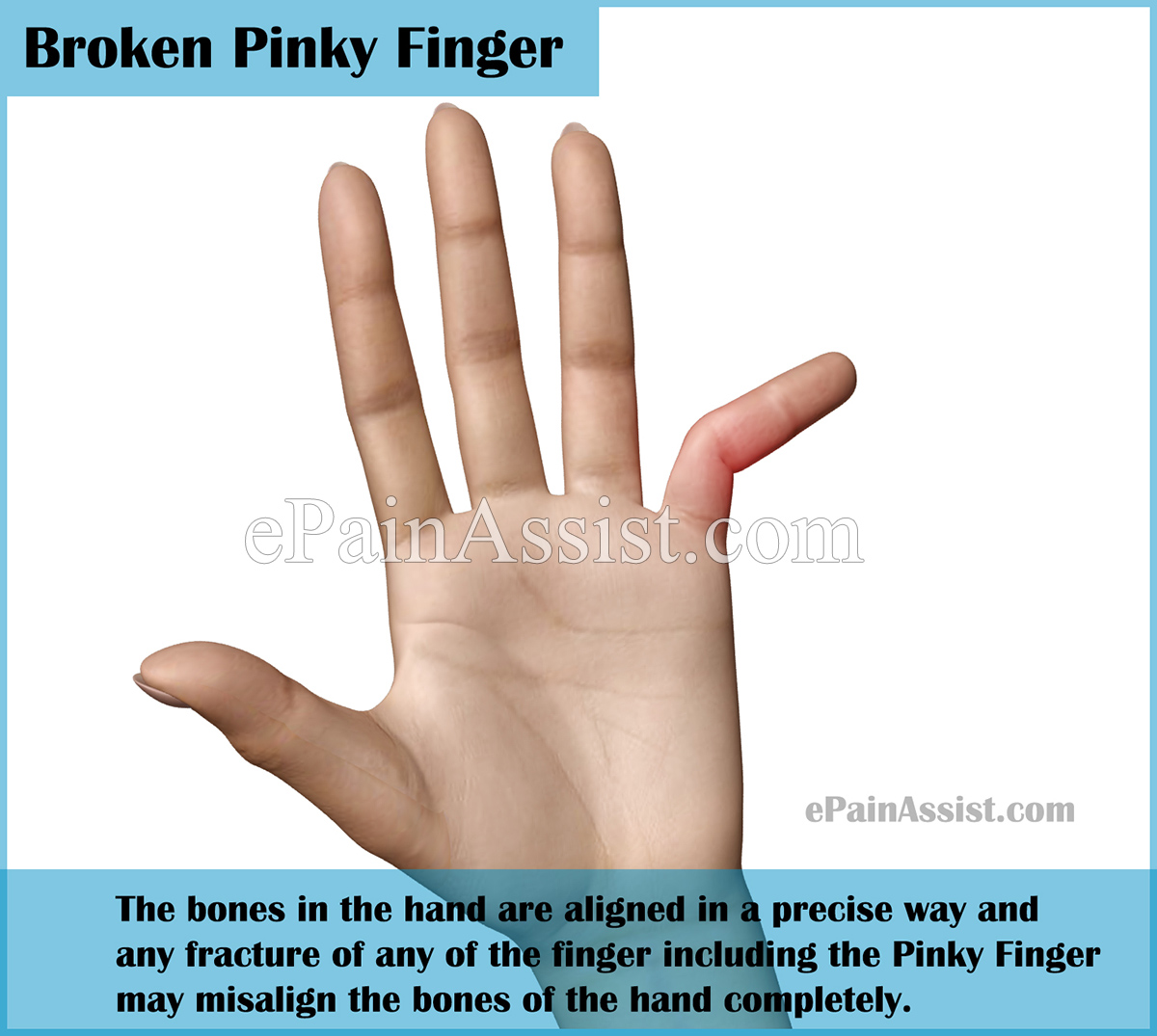What is Broken Pinky Finger or Pinky Finger Fracture?[1]
The fingers are a very essential part of our body as without them it will be virtually impossible to carry out daily activities. Hence, any injury to the fingers should not be taken lightly. The bones in the hand are aligned in a precise way and any fracture of any of the finger including the Pinky Finger may misalign the bones of the hand completely. If the fracture is not treated appropriately it may lead to persistent pain and stiffness of the Pinky Finger and may even cause deformity of the finger. The fingers are constituted of 14 bones which are known as the phalanges and a fracture to the finger may be a break in any of these 14 bones.

Causes of Broken Pinky Finger or Pinky Finger Fracture
All the fingers are constantly in use throughout the day and hence are more prone to injuries and fractures than the other parts of the body including the Pinky Finger. A fracture to the Pinky Finger can occur due to a direct injury or trauma to the finger. If a fast moving object hits the finger then it may result in a Broken Pinky Finger like attempting to catch a ball and the ball touches the pinky finger causing a jerking motion of the finger strong enough for the bones to break. You can also fracture your Pinky Finger while slamming the car door and the finger gets caught in the door of the car. You can even break the Pinky finger while in a fight or preventing yourself from a blow to the face by a punch. Certain medical conditions may also cause your bones to become weak and fragile making them prone to fractures even with a minor injury or trauma. These conditions include osteoporosis or malnutrition.
What are the Classifications of a Broken Pinky Finger or a Pinky Finger Fracture?
The following are the classifications of a finger fracture[2], including the Pinky Finger:
- Avulsion Fracture: In this type of fracture, the ligament or the tendon pulls away from the bone it is attached to
- Impaction Fracture: The broken ends of your bone move together
- Shear fracture: In this type of fracture, the bone breaks into two pieces because of the shear force which makes the bone to move in two different directions
- Open Fracture: In this type of fracture, the bone breaks and comes out through the skin
- Closed Fracture: In this type of fracture, there is a fracture but there is no damage done to the skin
- Nondisplaced Fracture: There is just a slight crack of the bone but is not displaced from its position
- Displaced Fracture: In this, the bone is broken and are no longer in proper alignment
- Comminuted Fracture: In this fracture, the bone breaks into multiple pieces.
What are the Risk Factors for a Broken Pinky Finger or a Pinky Finger Fracture?
The major risk factor for fracture of any bone in the body is calcium deficiency. Along with this, sportsmen and athletes are at an increased risk for breaking the Pinky Finger. Some of the sports which can cause a fracture of the Pinky Finger are:
- Basketball
- Baseball
- Wrestling
- Rugby.
What are the Symptoms of a Broken Pinky Finger or Pinky Finger Fracture?
Some of the symptoms which may suggest a Broken Pinky Finger or Pinky Finger Fracture are severe pain in the Pinky Finger along with swelling and tenderness in the area. There may also be visible deformity of the Pinky Finger. You may be unable to move the finger at all without severe pain.
How is Broken Pinky Finger or Pinky Finger Fracture Diagnosed?
The best way to diagnose a Broken Pinky Finger or a Pinky Finger Fracture is by radiologic studies in the form of an x-ray which will clearly show whether there is a broken bone in the finger or not.
How is Pinky Finger or Pinky Finger Fracture Treated?
A Broken Pinky Finger or a Pinky Finger Fracture can be treated both conservatively as well as with surgical intervention depending on the type of fracture.
Conservative Treatment: In this form of treatment the physician will reduce the fracture which means the doctor will put the bone back into its place and then apply a cast or a splint to immobilize the finger and allow the fracture to heal without further injuring it. In some cases, additional support to the broken Pinky Finger may be provided with splinting of the adjacent finger. The recovery time is normally three to four weeks. After this period a repeat x-ray will be taken to confirm the healing of the fracture.
Surgical Treatment: In case if there is significant injury to the finger and the bone gets misaligned then surgical correction of the fracture may be needed. The bones will be put back into place and appropriately aligned by use of screws, pins and wires.
What is the Recovery Period for a Broken Pinky Finger or Pinky Finger Fracture?[3]
If there is a mild fracture of the pinky finger which can be treated just by splinting or casting then the normal healing time for such fracture is about three to four weeks. In case if there is significant damage to the pinky finger and surgical correction is required then it may take up to 10 weeks for the finger to regain its function and for the individual to use the Pinky Finger normally.
- Non-operative treatment of common finger injuries (nih.gov)
- Fingertip Injuries – StatPearls – NCBI Bookshelf (nih.gov)
- Finger pain: MedlinePlus Medical Encyclopedia
Also Read:
